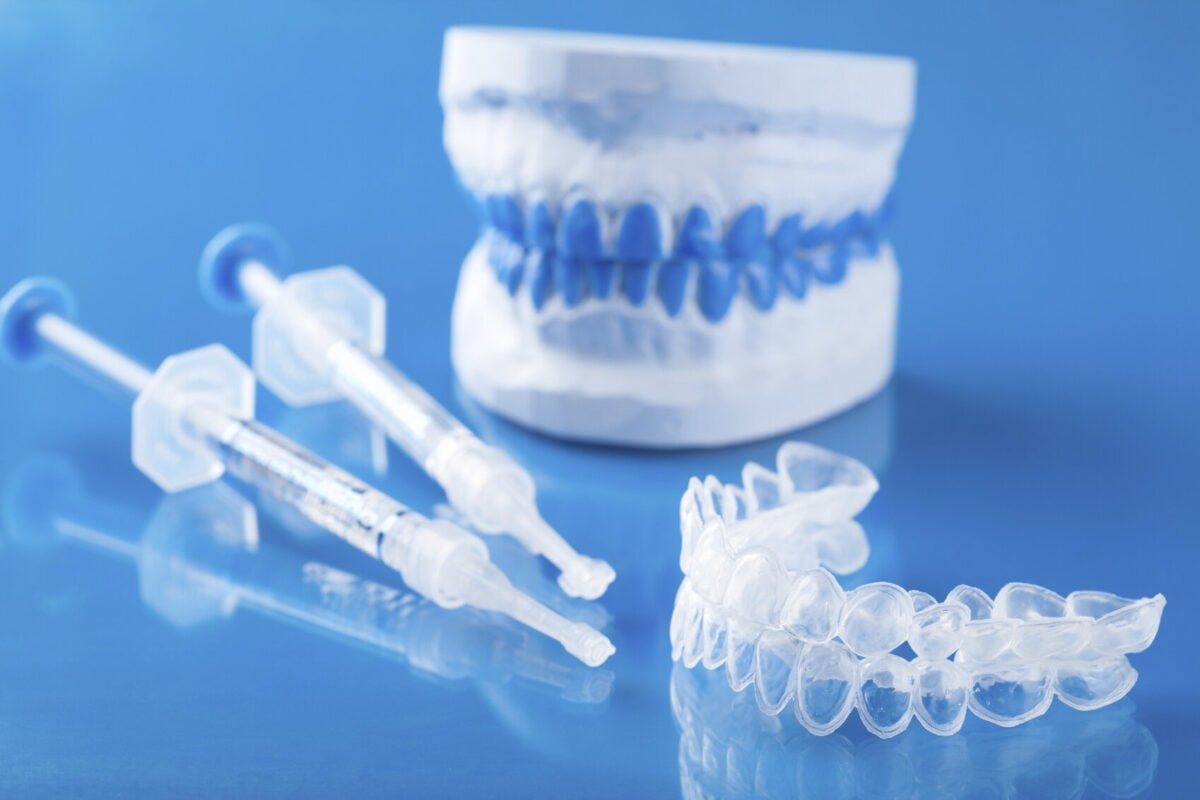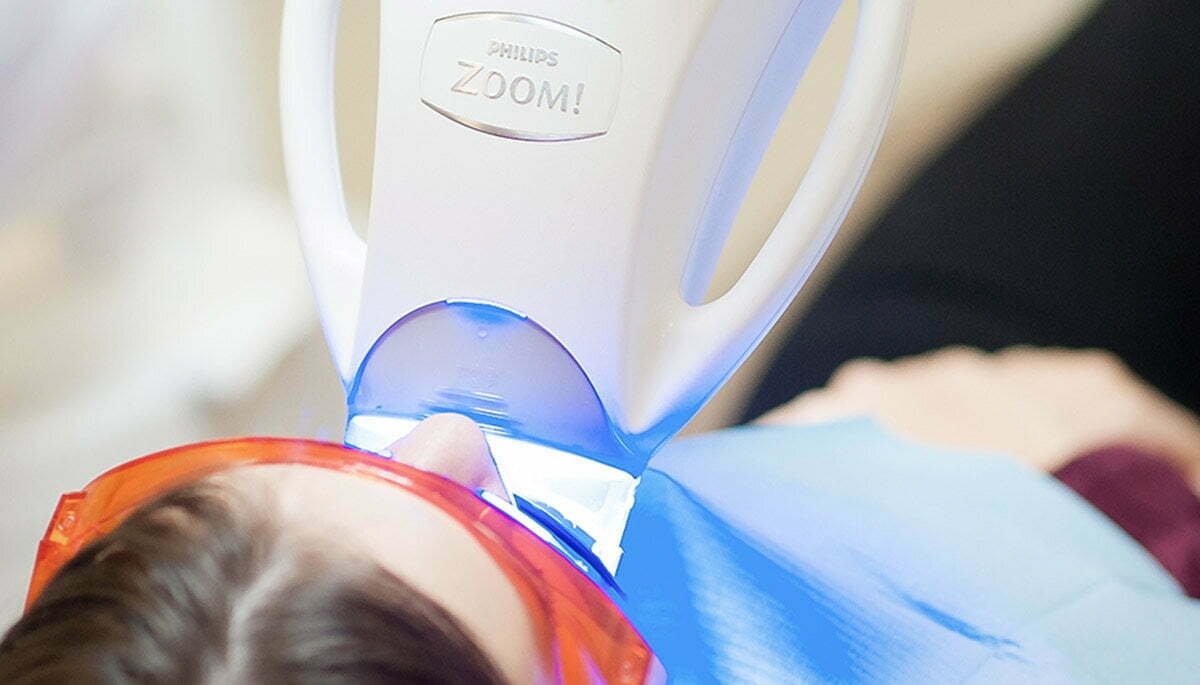Do you wish your smile was brighter? Are you shy about smiling, due to stained or yellowish teeth? In this post we'll discuss what causes tooth discoloration, how to avoid it, and go over your options: from at-home remedies, to in-office treatment.
What Causes Tooth Discoloration?
Tooth discoloration falls into three categories: extrinsic, intrinsic, and age-related. Extrinsic stains only affect the outer layer of the tooth (the enamel). These are commonly caused by coffee, wine, and tobacco. Intrinsic stains occur within the tooth, giving it a greyish colour. They can be caused by medications, injury, tooth decay, and genetics. Age-related discoloration is a normal process; as we get older, our enamel starts to wear down. This can cause teeth to appear yellowish.
How Can I Avoid Extrinsic Stains?
The most common tooth-staining foods and drinks are red sauces, red wine, tea, coffee, and chocolate. We know these are favourites for a lot of people, and while eating them in moderation is recommended, there are additional ways you can avoid staining. Drinking through a straw limits the contact beverages have with your enamel, which can reduce staining. Acidic beverages weaken your enamel (making it more prone to stains), so these are also best enjoyed in moderation and with a straw as well. Brushing and flossing as soon as you can, following any of these foods or drinks, can also help prevent staining, as you're removing the particles that sit and cause stains.
Tobacco use is another culprit. Studies have shown that there is a higher prevalence of tooth discoloration in smokers over non-smokers. Reducing or quitting smoking is one of the best ways to prevent yellowing teeth.
My Teeth are Already Discolored. How Can I Fix This?
There are multiple options to address tooth discoloration, from mild at-home treatments to professional help.
For an extrinsic stain, at-home treatments are a viable option; there are a variety of whitening toothpastes and strips available at most drug stores. Whitening toothpastes can help diminish the appearance of stains, but for more resistant extrinsic stains, you may seek out whitening strips. These have proven results, but some drawbacks. As your dental team, we are committed to providing you with all the information you need to make an informed decision. Whitening strips contain harsher chemicals than toothpastes and can cause gum discomfort or tooth sensitivity. The complaint we hear most from patients is that the provided strips are too short to cover their arches.
For all types of stains (extrinsic, intrinsic, and age-related), we can help. There are two professional whitening options provided by the team at Toothworks.
At-home whitening gel with custom trays made exclusively for your teeth. This treatment option can provide excellent results, over the span of a week of at home treatment. How it works: we fabricate custom made, thin plastic trays using a digital impression of your teeth. We then provide you with the trays, along with whitening gel. You will load the trays with the gel and insert the trays into your mouth. The loaded trays are to be kept in your mouth for the prescribed period of time (between 30 minutes to 1 hour), or for as long as is comfortable for you. You will repeat this exercise daily, until you have achieved your desired level of whitening – one week of treatment is sufficient for most patients.
The at-home whitening gel we offer is much stronger than any over-the-counter product you will find. It is made safe for home use by the custom trays, which adapt to your teeth extremely well. The trays keep the gel on your teeth, and off of sensitive gum tissue. They also hold the gel tight against the exposed surfaces of each tooth, ensuring complete, consistent brightening of the each tooth. Our patients who choose this modality of whitening are very pleased with the results.
NOTE: If you are a current or former Invisalign patient, your aligners and retainers can serve as the custom trays for at-home whitening! Simply purchase the gel at our office and get to it! Using your existing custom aligners or retainers is the most cost-effective approach to professional whitening.
In-office ZOOM Whitening. This treatment option offers the most dramatic results, in the shortest period of time. The Zoom!® In-Office Whitening System uses proprietary technology to whiten your teeth an average of eight shades (individual results may vary) in about one hour while you relax in one of our operatories. This treatment utilizes Zoom hydrogen peroxide whitening gel, which works together with the Zoom light to penetrate the teeth and break up the stains and discoloration. The process is closely monitored by our team, to minimize tooth sensitivity after the fact.
One thing to note: whitening treatments of any kind (toothpaste, strips, at-home kits and Zoom) only affect enamel. There is currently no treatment to whiten bonding, denture teeth, veneers, or crowns. If you have any tooth restorations that are visible when you smile (a.k.a. in the "esthetic zone"), and are looking to whiten your teeth, you may want to chat with your dentist. Extreme lightening of your natural teeth may mean you'll want to replace your restorations that are in the" "aesthetic zone". They may no longer match the colour of your surrounding teeth. In the same vein, those looking to pursue aesthetic dental work may consider whitening their teeth prior to proceeding with treatment. We work diligently to match new dental restorations to your existing tooth colour. Therefore, "whitening first" is often prudent.
For extrinsic and age-related staining, treatment options are going to depend on the nature and extent of the staining. These type of stains are often best managed by placing thin porcelain restorations over the affected teeth (i.e. veneers, as in the photo below).
Before and after of veneer placement to resolve age-related extrinsic staining and natural tooth wear.
Intrinsic and age-related stains vary widely in severity and appearance. The most ideal treatment approach will depend on your current circumstance, and your goals for your teeth. Feel free to ask about your options at your next visit!
Our mission is to help our patients achieve the smile of their dreams. If you're experiencing tooth discoloration, please let your hygienist or dentist know at your next appointment. We can help determine the cause, and develop a plan for a whiter smile!
Yours in better dental health,
Toothworks







